Results 1 to 10 of 23
Hybrid View
-
03-24-2015, 01:15 AM #1

The history of the WOLF (crown) mark is fairly complicated and murky. John Shepherd, or possibly John Shepherd and his son of the same name, seem to have produced razors from 1774 until the late 1820's. George Shepherd may have been another son, or a distant relative capitalizing on the name. John Barber bought the mark in 1839, but he didn't survive much longer. Much later, Joseph Elliot purchased it (along with Barber's marks), but that was in the late 1800's.
Your razor is pretty straightforwardly from John Shepherd, and most likely from 1780-1800.
The blade originally looked like this:

Many razors from the period were worn down the way yours is. Like yours, many of them continue to be superb razors.
It's a wonderful treat to shave with such an old and distinguished razor. Enjoy!-Zak Jarvis. Writer. Artist. Bon vivant.
-
The Following 5 Users Say Thank You to Voidmonster For This Useful Post:
BobH (01-19-2016), Geezer (01-19-2016), Slawman (08-18-2016), Walterbowens (02-06-2016), WW243 (01-19-2016)
-
03-24-2015, 03:14 AM #2Senior Member

- Join Date
- Jan 2015
- Location
- Apex NC
- Posts
- 534
Thanked: 90
I had a feeling that is what I was seeing in the info. Thank you. You also answered my next question about the blade shape/grind. I like it though tells my thumb where the blade starts. Now I need to hunt down one with a full blade.
-
03-24-2015, 01:01 PM #3Senior Member

- Join Date
- Jan 2015
- Location
- Apex NC
- Posts
- 534
Thanked: 90
One last thing Voidmonster or anyone who knows. From looking at your blade the bevel/blade looks much shorter with a longer tang between the blade and the scales than on mine. Am I seeing that correctly? Were they all like that which would make mine more of a regrind? I really love the look and feel of these old blades and will probably collect a few more over time. I started my collection with 5 old, some kind of rare hollow ground blades from my Grandpa. Not sure where he got them since some are from the early to mid 1800's. Wish I had them when he was alive to ask. I moved on too the sheffield wedges and found I like the look and feel better than hollow ground and now these early blades feel even better.
This site has been a great help in figuring out the history of what I have and stone/honing to up keep my razors.
When I get a chance I need to take some picks and figure out more about a Numax razor and a Gebruder Weyersberg.
Thanks again. Enjoy.
-
The Following User Says Thank You to rideon66 For This Useful Post:
Voidmonster (03-28-2015)
-
03-28-2015, 09:57 PM #4

It's a bit of a trick of the light. The bevel continues all the way back to where there's that little dogleg in the spine just before it gets to the WOLF mark.
My strong suspicion is that a lot of the old razors ended up worn down the way they were not because they were reground but because they were stropped daily with a pasted (abrasive) strop.
Old Sheffield manufacturers produced a bewildering array of styles and shapes, even from 1780-1810. This particular shape of blade doesn't seem to have been manufactured much beyond 1800, but many of the other types of blade made from 1800-1820 continued to be produced nearly into the 20th century.-Zak Jarvis. Writer. Artist. Bon vivant.
-
The Following User Says Thank You to Voidmonster For This Useful Post:
rideon66 (03-29-2015)
-
01-19-2016, 01:42 PM #5Senior Member

- Join Date
- Jan 2015
- Location
- Apex NC
- Posts
- 534
Thanked: 90
Ok now I have an interesting question. I was under the impression my razor originally looked like that, but found this one that looks identical to mine.
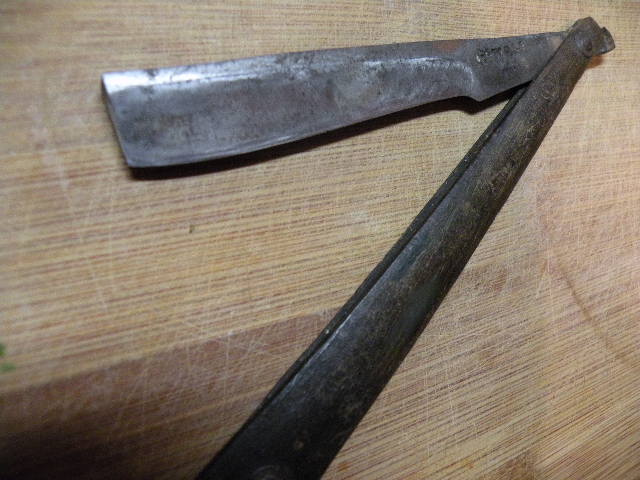
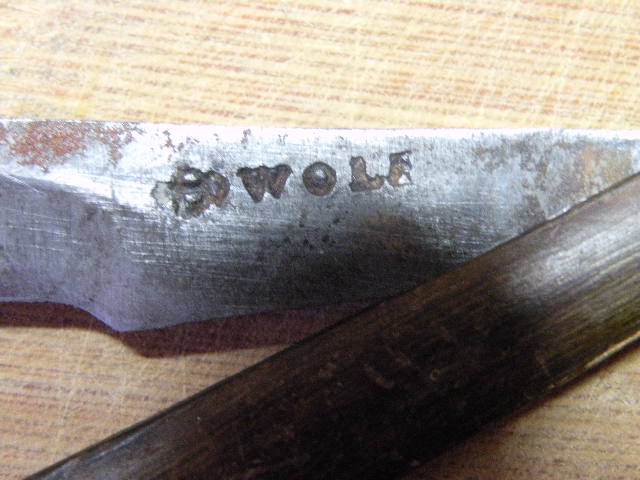
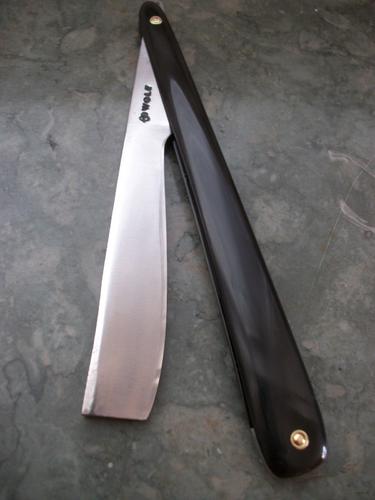
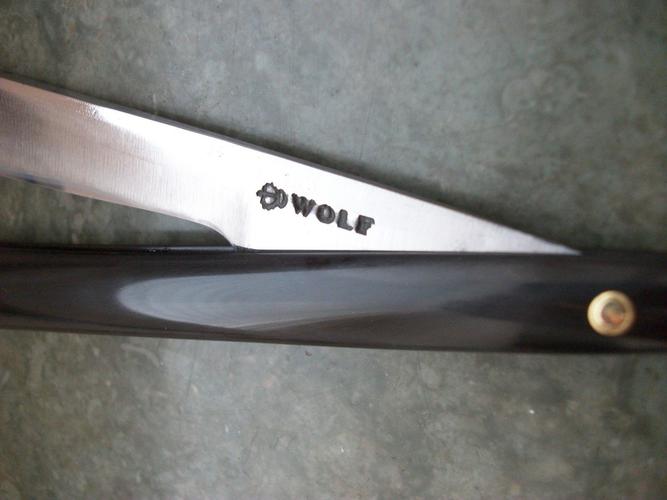
So now I wonder if mine is original and was just a different grind. I would assume the straight one is earlier and mine would be a little later as they evolved.
-
01-19-2016, 05:38 PM #6

This is something I've been wondering about, but it's difficult to know for certain.
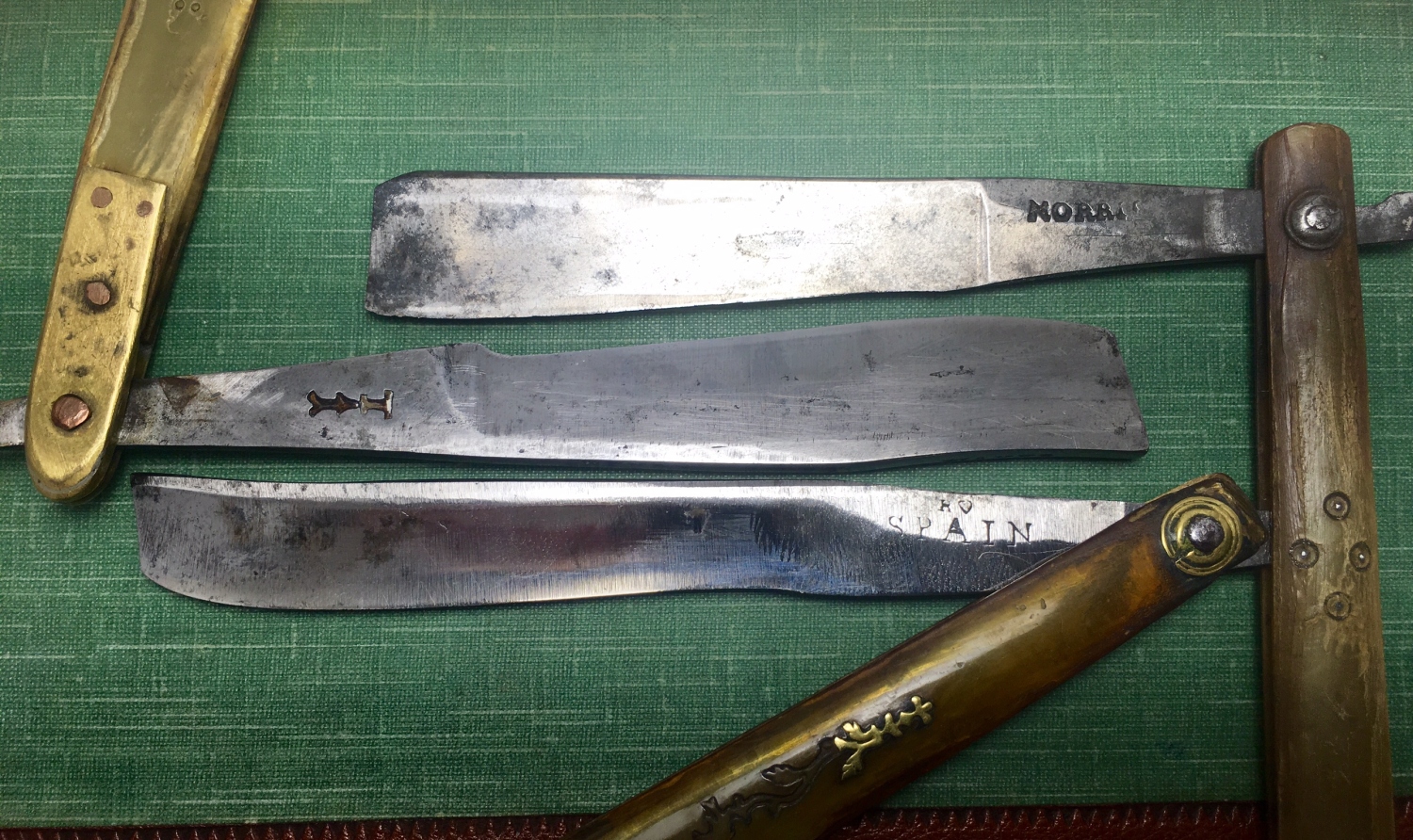
Norris is 1790-1800, strange symbol made by Henry (illegible) 1750-1774, R(heart) Spain was made by Ann Rowland between 1774 and 1787.
I've seen many 1700's razors with that tooth at the end of the cutting edge. It's there in all the ones shown, even the later Norris.
It's dead-certain that abrasive, pasted strops were very popular during this period. Packwood made his name by selling little packages of strop paste along with his strops (before he had his own brand of razors, made by various Sheffield manufacturers). Also popular at the time were padded strops, where the strop surface was a cushy, rounded surface. Between that and the abrasive paste, regular stropping would have had to wear down razors, and the tapered end of the cutting edge on those old styles would definitely end up showing a tooth like that from strop wear.
However! There's no sign of abrasion on the spine of the razor with the odd mark, and the hone lines are pretty regular. It's sort of suggestive that the shape may have been intentional and possibly even original.
The short version is that I don't know, but sort of suspect that may have been a feature, not a bug. At this remove from the period, lacking any sort of documentary evidence other than the razors themselves, my best guess is still on wear, not design.
I am open to other possibilities though.-Zak Jarvis. Writer. Artist. Bon vivant.
-
The Following User Says Thank You to Voidmonster For This Useful Post:
WW243 (01-19-2016)
-
01-19-2016, 07:36 PM #7Senior Member

- Join Date
- Jan 2015
- Location
- Apex NC
- Posts
- 534
Thanked: 90
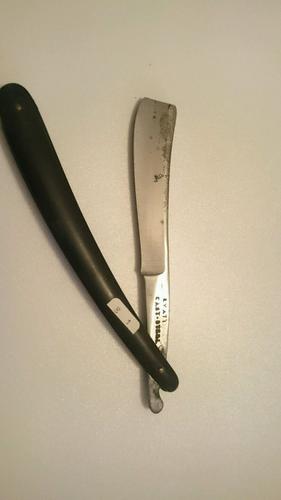
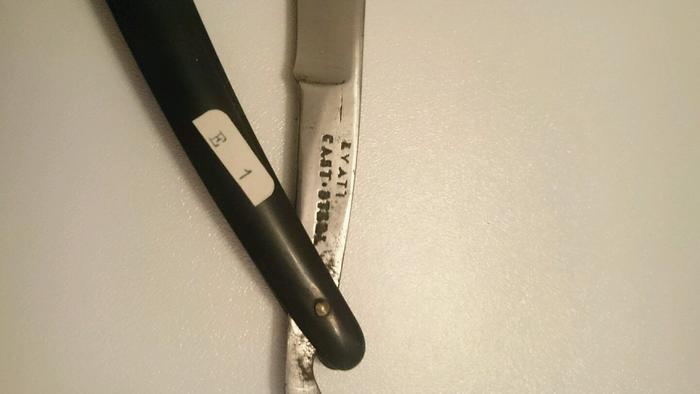
Ok in support of the tooth. Here is a razor close to that period that I actually just bought and it is only shipping tomorrow from Sweden so won't have it for awhile. Anyway it has the tooth and by the design of the tang/shank it looks like it was meant to be there and not from using pastes. I am guessing the scales are not original, but I could be wrong.Last edited by rideon66; 01-19-2016 at 07:40 PM.
-
01-19-2016, 10:00 PM #8

I have wondered about this a bit, I have seen that heel tooth on many many razors of mine, but only on those that also show signs of very heavy wear or reworking. I suspect 99% it was caused over time and not be design, but as Zak says, it's hard to say without hard evidence. The vast majority of depictions of period razors, as well as those in closest to original condition, there is a nice smooth line along the edge. The difference is with these razors, there is almost no transition at the tang, so any grinding work done, if not done to the whole tang as well (which I have also seen on some examples), will result in the odd shapes observed.
@rideon, I'm positive those scales are more modern based on the shape of them. They look like gutta percha but I can't say without seeing them closely.
-
01-19-2016, 10:37 PM #9

http://straightrazorpalace.com/attac...big-knives.jpg
The shape is verily similar to a well honed/worn out knife like these pictured here. I doubt that they were made that way.
-
01-20-2016, 02:00 AM #10Senior Member

- Join Date
- Jan 2015
- Location
- Apex NC
- Posts
- 534
Thanked: 90
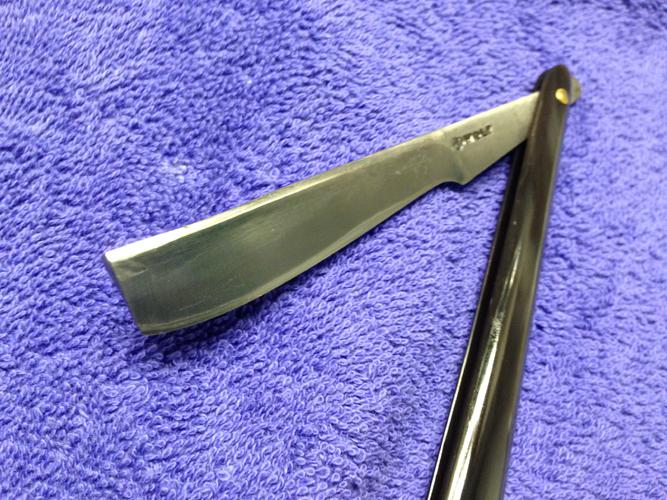 Yes but some knives filet for example are made exactly that way on purpose. Also does not explain how two razors made by the same maker at around the same time that spent lots of time on two separate continents(that are rare also) ended up with what looks like the exact same dimensions and hone wear? Why also does the one I just bought have the tooth below the tang which is clearly defined tang. So this one if it was worn down that way wwould've had the blade below the tang? Also I have seen others from this maker that looked almost identical in shape. Which is an odd shape.
Yes but some knives filet for example are made exactly that way on purpose. Also does not explain how two razors made by the same maker at around the same time that spent lots of time on two separate continents(that are rare also) ended up with what looks like the exact same dimensions and hone wear? Why also does the one I just bought have the tooth below the tang which is clearly defined tang. So this one if it was worn down that way wwould've had the blade below the tang? Also I have seen others from this maker that looked almost identical in shape. Which is an odd shape.
Last edited by rideon66; 01-20-2016 at 02:11 AM.


 45Likes
45Likes LinkBack URL
LinkBack URL About LinkBacks
About LinkBacks







 Reply With Quote
Reply With Quote

